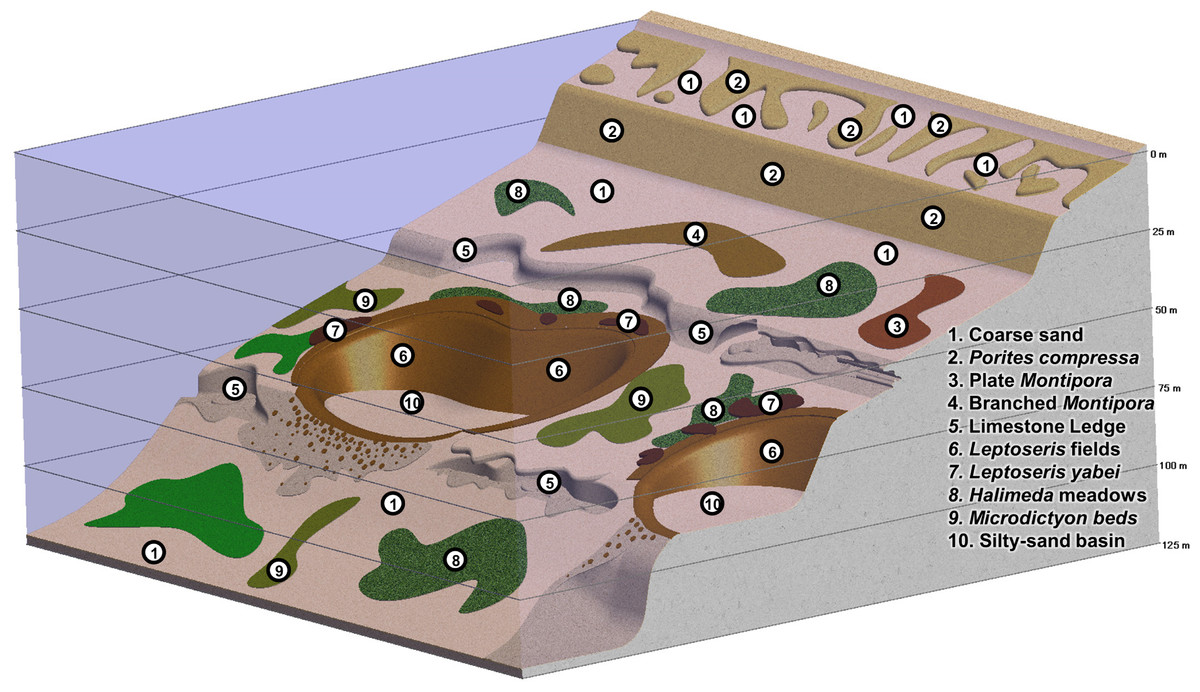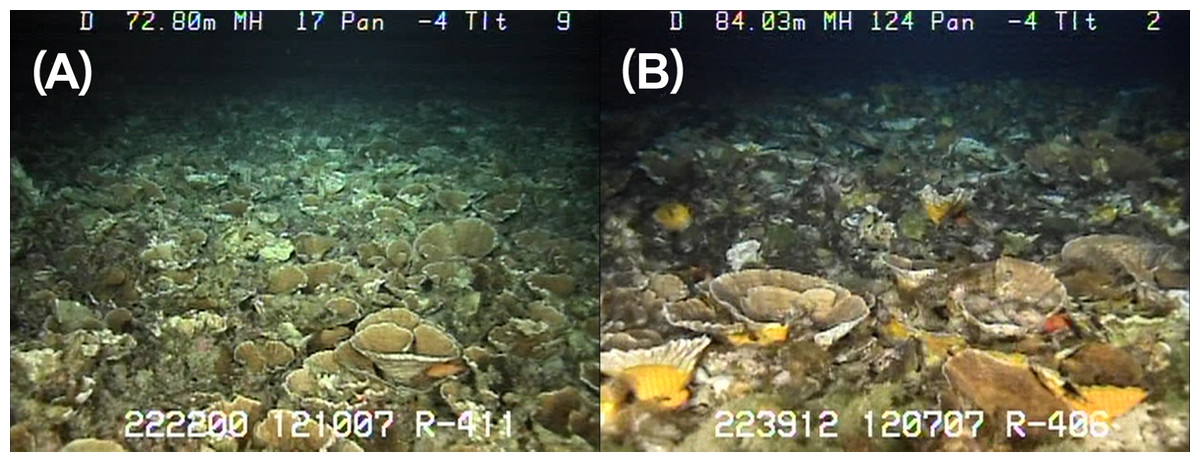Researchers in Hawaii have completed a comprehensive investigation of deep mesophotic coral-reefs throughout the Hawaiian Archipelago. The study, published in the open-access journal PeerJ involved a team of sixteen researchers and spanned more than twenty years.
Although the existence of these deep habitats has been known for decades, the richness, diversity, and ecological importance of mesophotic coral ecosystems have only recently become widely acknowledged. To document the habit researchers used submersibles, remotely operated vehicles, drop-cameras, data recorders, and advanced mixed-gas diving.
The researchers documented vast areas of 100% coral-cover and extensive algal communities at depths of 50-90 meters (165-300 feet) extending for tens of square kilometers, and found that the deep-reef habitats are home to many unique and distinct species not found on shallow reefs. The findings of the study have important implications for the protection and management of coral reefs in Hawaii and elsewhere.
“This is one of the largest and most comprehensive studies of its kind,” said Richard Pyle, Bishop Museum researcher and lead author of the publication. “It involved scientists in many different disciplines and from multiple federal, state, and private organizations working together with a range of different technologies across the entire Hawaiian Archipelago.”
The primary objective of the study was to characterize deep coral reef habitat, known as “mesophotic coral ecosystems” or the coral-reef “Twilight Zone.” Coral reefs at depths of 30 to 150 meters (100 to 500 feet) are among the most poorly explored of all marine ecosystems on Earth. Deeper than conventional scuba divers can safely venture, and shallower than most submersible-based exploration, these reefs represent a new frontier for coral-reef research.
A major focus of the study was to document extensive areas of 100% coral cover at depths of 90 meters (300 feet) or more off the islands of Maui and Kaua’i. In particular, vast expanses of continuous coral cover, extending for tens of square kilometers, exist in many sites in the ‘Au’au channel off the southwest side of Maui. The reefs are dominated by stony, reef-building corals in the genus Leptoseris, a plate-like coral specialized for deep-reef environments.
(A) Kaua‘i and (B) Maui, showing the close similarity in general structure. Photo PeerJ
“These are some of the most extensive and densely populated coral reefs in Hawai’i,” said Anthony Montgomery, a co-author of the study who represented the Hawai’i State Department of Land and Natural Resources during most of the project. “It’s amazing to find such rich coral communities down so deep.”
The research, which spanned more than two decades and encompassed the entire 2,590-kilometer (1,600-mile) extend of the Hawaiian Archipelago, was primarily supported by NOAA’s National Centers for Coastal Ocean Science, Papah?naumoku?kea Marine National Monument, Coral Reef Conservation Program, Office of Ocean Exploration and Research, and the Pacific Islands Fisheries Science Center, as well as, the Hawai’i Undersea Research Laboratory and the State of Hawai’i.
Mesophotic reefs in Hawaii are rich in coral cover and unique fish species
Share This


